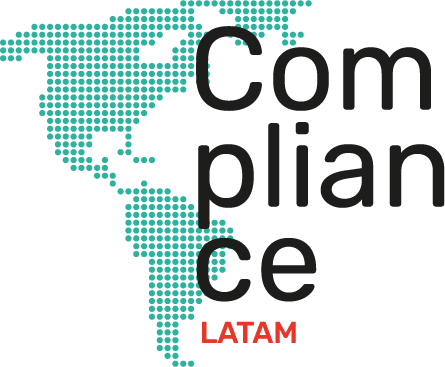
03-10-2024 | Noticias-en, Opinions
On September 26, the regulations governing the supervision of legal entities , in accordance with the provisions of the Law on Economic Crimes , were published in the Official Journal .
Among the most relevant modifications, the figure of supervision of the legal entity was incorporated , which can be ordered by a court as a penalty, precautionary measure or condition of a conditional suspension of the procedure.
In addition, it seeks to ensure that companies that are part of the proceedings establish an effective system for preventing economic crimes.
Among the most relevant aspects for the application of this regulation, there are several elements that are key to the effective functioning of the supervision system for legal entities.
Below we mention the following:
- Definition of supervision of legal person: According to the regulation, supervision of the legal person consists of “ subject to a supervisor, appointed by the court, responsible for ensuring that the legal person effectively develops, implements or improves a crime prevention system within a minimum period of six months and a maximum of two years . ”
- General requirements for the application of the legal entity: The court will appoint a supervisor in those cases where it is determined that the legal entity does not have a crime prevention system , or said system is insufficient to prevent crimes.
- Obligations: The legal entity shall be obliged to make available to the supervisor all the information necessary for the performance of the assignment, including allowing access to its facilities and premises.
In addition, he/she shall be obliged to comply with the instructions given by the supervisor in the development, implementation, improvement or control of the operation of the crime prevention system.
Regarding the role of the supervisor , several key aspects stand out that are fundamental to understanding his role and responsibility within the supervision system of legal entities, among which the following stand out:
- Qualifying requirements to hold the position: The supervisor must be a natural person who meets certain requirements such as:
- Have a relevant professional qualification (professional degree of at least ten semesters in duration).
- At least five years of verifiable experience.
- Knowledge of risk management and crime prevention, and experience in the applicable legal framework.
- In addition, the director must ensure that there are no conflicts of interest or prohibitions or disqualifications that affect the exercise of his or her duties.
- Powers and duties of the supervisor:
- It may issue instructions and set conditions on the legal entity’s crime prevention system, as determined by the court.
- You have the right to access information, facilities and interview personnel necessary to perform your duties.
- Its actions are limited to the prevention of crimes, and it must maintain confidentiality regarding the information obtained, except in public reports.
- In addition, he is considered a public employee for the purposes of his responsibilities.
- Supervisor’s remuneration: The supervisor’s remuneration will be determined by the court according to market criteria and will be the responsibility of the company.
This remuneration will cover all expenses and fees related to supervision, including those of his team.
Candidates will propose their compensation at the appointment hearing, taking into account factors such as the size and complexity of the legal entity, as well as the compensation of similar supervisors and other relevant positions.
For more information on the application of this regulation, we recommend consulting our Compliance group :
Rodrigo Albagli | Partner | ralbagli@az.cl
Yoab Bitran | Compliance group director | ybitran@az.cl
Caterina Ravera | Senior Associate | cravera@az.cl
Sebastian Achondo | Associate | sachondo@az.cl
Loreto Osorio | Associate | losorio@az.cl

27-09-2024 | Noticias-en, Opinions
SBS Resolution No. 02648-2024, a crucial regulation for the prevention of money laundering and terrorist financing (LAFT) applicable to Virtual Asset Service Providers (PSAV), was published.
Importance
This resolution is especially relevant for those operating in the virtual assets (cryptocurrencies) market, ensuring that their activities are carried out within a regulatory framework that minimizes risks and promotes transparency.
Scope and Reach
As of July 2023, PSAVs were incorporated as subjects required to report to the UIF-Peru through DS No. 006-2023-JUS.
Now, with this resolution, specific rules are established that will regulate the LAFT Prevention System for all PSAVs domiciled or incorporated in Peru.
What are PSAVs and what activities do they perform?
Virtual Asset Service Providers (VASPs) are entities that facilitate transactions and services related to virtual assets, such as cryptocurrencies (Bitcoin, Ethereum, and others). According to Article 2 of the resolution, VASPs can carry out activities such as:
- Exchange between virtual assets and fiat or legal tender currency.
- Exchange between one or more forms of virtual assets.
- Transfer of virtual assets.
- Custody and/or administration of virtual assets or instruments that allow control over them.
- Participation and provision of financial services related to an issuer’s offering and/or sale of a virtual asset
Obligations of the PSAV
- The PSAV must implement a system for the prevention of money laundering and tax evasion (SPLAFT) by managing the risks to which it is exposed. This includes appropriate policies and procedures for knowing its customers, identifying unusual transactions and ensuring employee training.
- PSAVs must register with the Financial Intelligence Unit (UIF-Peru) as SO and keep their status as obligated subjects up to date.
- In the event of ceasing their activities or modifying their regulations, PSAVs must notify the UIF-Peru within 30 days.
- PSAVs must comply with specific due diligence requirements to know their customers and report suspicious transactions.
Validity:
- The regulation came into force on August 2, 2024.
- Chapter VIII, called “Travel Rules”, which includes specific provisions on the transfer of information in virtual asset transactions, comes into force in two years, in August 2026 .
Adaptation period:
PSAVs have a period of 120 days to adapt to the new provisions. This period is essential to implement the systems and procedures necessary to comply with the standard.
For more details or how to adapt the standard, you can contact us: compliance@cpb-abogados.com.pe

23-09-2024 | Noticias-en
Decree No. 749/2024 , which regulates the Large Investment Incentive Regime (RIGI), includes a series of relevant aspects linked to the regulation of competition defense.
– Its article 47, paragraph h) establishes, in line with the provisions of article 176, paragraph h) of Law No. 27,742, that the application for adhesion to the RIGI must include a sworn declaration that the RIGI Project will not distort the local market.
Such statement must be supported by a technical study carried out by a lawyer or economist with technical knowledge in competition defense and must include, as a minimum (i) the description of the product or service to be offered; (ii) the definition and projection of the probable evolution of the relevant market(s); (iii) the identification of the participants in the market(s) under analysis that could be affected by the project and (iv) an analysis of the positive and negative aspects that the projected investment could have in the relevant market.
– Article 52 establishes that failure to include the elements referred to in the preceding paragraph will lead to the rejection in limine of the application for accession.
– Once the technical study has been submitted, the Enforcement Authority may request the National Commission for the Defense of Competition to issue a non-binding opinion.
For more information contact:
Gustavo Papeschi | Partner at Beccar Varela | gpapeschi@beccarvarela.com

16-09-2024 | Noticias-en
In a context where sustainability and respect for the environment are increasingly important to consumers, companies are faced with the challenge of demonstrating their genuine commitment to ecology.
However, some organisations fall into the trap of greenwashing, a deceptive practice that consists of promoting an ecological image without adopting real sustainable practices. To avoid this problem and build a genuine reputation, companies should follow a series of key recommendations.
- Define and understand your real environmental impact
The first step to avoiding greenwashing is to have a clear understanding of your company’s environmental impact. Conduct a thorough assessment of all your operations to identify areas where you can reduce your ecological footprint. This includes production, resource consumption, waste generated, and the supply chain. Make sure your sustainable practices are based on real, objective data.
- Set clear and measurable goals
Once you understand your environmental impact, set clear, achievable goals to improve your sustainability. These goals should be specific, measurable, attainable, relevant and time-bound (SMART). Communicate these goals transparently to your customers and stakeholders and publish regular reports on your progress. Transparency is critical to building trust and avoiding the perception of greenwashing.
- Verifiable eco-labels and certifications
Obtaining third-party-recognized certifications is an effective way to demonstrate your commitment to sustainability. Certifications such as ISO 14001, the LEED standard for green buildings, or eco-labels such as the EPA or FSC seal for wood products, lend credibility to your sustainability claims. Make sure these certifications are from accredited bodies and meet rigorous standards.
- Avoid ambiguous and generic statements on your products
Vague claims like “100% natural” or “eco-friendly” without specific details can be a sign of greenwashing. Avoid using broad, unclear terms that don’t provide concrete information about how your products or practices are actually sustainable. Instead, provide specific details about which aspects of your operations are sustainable and how they compare to industry standards.
- Educate and train your team
A commitment to sustainability should be an integral part of your company culture. Train your team on sustainable practices and the importance of transparency. Encourage an eco-minded approach at all levels of the organization, from senior management to production staff. Ongoing sustainability education will help prevent the adoption of greenwashing practices and maintain an authentic and responsible approach.
- Ensure the veracity of your communications
Before making any claims about the sustainability of your practices, make sure that all information provided is accurate and verifiable. Conduct internal or external audits to validate your claims and periodically review your strategies to maintain accuracy. Truthfulness in communication is crucial to avoid misunderstandings and maintain consumer trust.
- Involve stakeholders
Sustainability is a collaborative effort. Involve your stakeholders, including customers, suppliers, and local communities, in the process of continuous improvement. Ask for their feedback and consider their concerns when developing and adjusting your sustainable practices. This approach not only improves the authenticity of your initiatives, but also strengthens relationships and loyalty to your brand.
- Monitor and adjust your practices
Finally, commitment to sustainability is a dynamic process. Continuously monitor the environmental impact of your practices and adjust your strategies as needed. Sustainability is a journey, not a destination, and requires constant adaptation to new technologies, regulations, and market expectations.
Avoiding greenwashing involves a genuine and transparent approach to sustainability and by considering and carrying out these eight recommendations mentioned above, you can build a strong and authentic reputation around your commitment to the environment.
As a result, it can bring significant benefits to your business in terms of reputation, customer loyalty, regulatory compliance and competitive advantage.
But more importantly, this approach not only prevents greenwashing, but also contributes to a more sustainable future for all.

10-09-2024 | Noticias-en
On September 10, 2024, Parliament approved the bill for the regulation of virtual assets (the Law), which modifies the current regulations to formally recognize virtual assets, equating them regulatoryly to book-entry securities, and includes Virtual Asset Service Providers (PSAV) within the regulatory and supervisory scope of the Central Bank of Uruguay (BCU).
Below we highlight the most relevant points:
- A new species is added within the genre of scriptural values
The Law modifies article 14 of the Securities Market Law No. 18,627, with the purpose of including virtual assets within the definition of book-entry securities. As of this modification, book-entry securities will be divided into two categories:
- centralized registration (which maintain the current regulations in their entirety); and
- decentralized ledger, a new category that encompasses virtual assets, which are characterized by the absence of a centralized registering entity, since they are issued, stored, transferred and negotiated electronically through distributed ledger technologies.
With the addition of this new class, the rules applicable to book-entry securities will be extended to virtual assets, to the extent that they are compatible with the nature of the latter’s non-centralized registry.
- PSAVs are included within the regulatory and supervisory scope of the BCU
The Law modifies articles 37 and 38 of the Organic Charter of the BCU (Law No. 16,696), with the aim of placing the PSAVs that operate with virtual assets of a financial nature under the control of the Superintendency of Financial Services (SSF).
In addition, the BCU will regulate and supervise the activity of entities that provide virtual asset purchase and sale services, in accordance with the definition it adopts for such purposes.
PSAVs must request authorization from the BCU to operate, which will grant or deny it based on criteria of legality, opportunity and convenience, and may revoke it in the event of serious violations, in addition to establishing the rules for their operation.
- PSAVs are regulated in terms of money laundering and terrorist financing control
The Law also seeks to make the PSAVs subject to the regulatory and supervisory powers of the BCU in the area of money laundering and terrorist financing control for the activities they carry out. This is because the entities included in the second paragraph of article 37 of the Organic Charter of the BCU are also, by legal provision, subject to this type of control.
For more information contact:

Carla Arellano | Ferrere Advisor | carellano@ferrere.com

10-09-2024 | Noticias-en
Today, our personal data is a valuable asset that is constantly circulating on the Internet and we leave a digital footprint that can be used in various ways. Given this situation, Law 1581 emerges as a beacon of protection, establishing a solid legal framework to guarantee our privacy in the digital world.
This Colombian regulation recognizes and protects the fundamental right of all people to know, update and rectify the information that has been collected about them. At the same time, it establishes clear limits on the collection, use and disclosure of personal data, thus avoiding abusive practices such as discrimination and the misuse of our information.
For businesses, Law 1581 represents an opportunity to build relationships of trust with their customers. By complying with this legislation, organizations demonstrate their commitment to transparency and data protection, which in turn strengthens their reputation and brand loyalty.
For further information, contact:

Oscar Tutasaura | Partner Posse Herrera Ruiz | oscar.tutasaura@phrlegal.com





